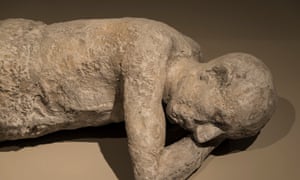Investigating the historic eruption of Mount Vesuvius - podcast
When Mount Vesuvius erupted in AD79, the damage wreaked was catastrophic. Ash and pumice darkened the skies, and hot gas flowed from the volcano. Uncovering the victims, fated to lie frozen in time for 2,000 years, has shown they died in a range of gruesome ways. Nicola Davis speaks to Pier Paolo Petrone about his work analysing ancient inhabitants of Pompeii and nearby towns, and what it tells us about the risk people face today
- Pier Paolo Petrone is director of the laboratory of human osteobiology and forensic anthropology of the University Federico II of Naples
- Read about how the AD79 Mount Vesuvius eruption vitrified victims’ brains here and the discovery of brain cells within the material here
- Let us know what you think of the episode and any stories you’d like us to cover in the future. Leave a comment below or send us an email at: scienceweekly@theguardian.com
- If you have a question about the Covid-19 outbreak you’d like us to investigate, fill in this form

Support The Guardian
The Guardian is editorially independent. And we want to keep our journalism open and accessible to all. But we increasingly need our readers to fund our work.
Support The Guardian